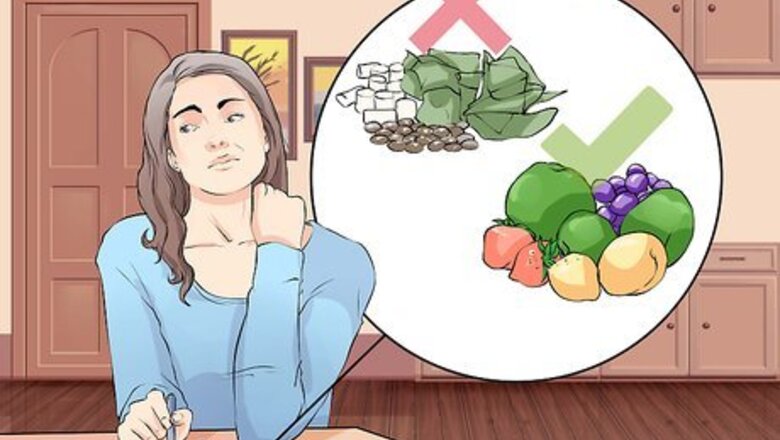
views
X
Research source
These reasons plus many others are why so many people are choosing to give up sugar altogether. Giving up sugar can be a difficult task. It's hard to understand what types of sugar are appropriate to consume and which can lead to health problems. In addition, many people may find it difficult to tell what foods have natural sugar and which ones have added sugars. Learning about sugars and how they affect your body may leave you feeling happier, healthier, and more in control of your diet.
Making a Commitment to Quit
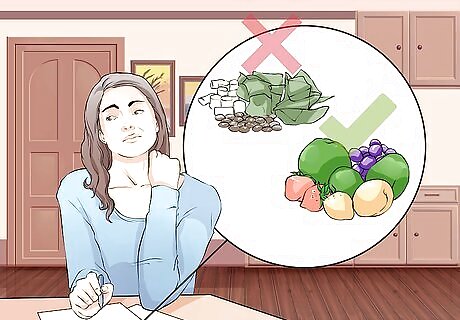
Decide to go cold turkey or taper. When you're deciding to give up any food you'll have to decide if you're going give it up all at once or slowly taper it out of your diet. Regardless of which option you choose, there will likely be some withdrawal symptoms. If you're used to eating a lot of sugar, going cold turkey might be harder. It may be best to gradually remove sugar from your diet over a few weeks. If you only consume small amounts of sugar you may be able to go cold turkey with minimal symptoms.
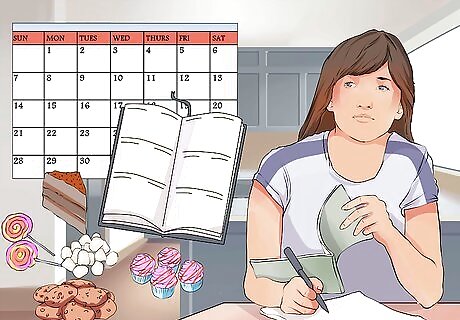
Journal. Letting go of sugar may not always be an easy task. In addition, finding foods to replace sugar in diet may also be difficult or time consuming. Start journaling your foods, diet plan, and how you're feeling as you cut sugar out of your diet. Come up with a strategy and make notes in your journal. You might start by writing down a food diary to get an idea of how much sugar you consume in any given day or week. Then you can start making a plan of how to reduce sugar in your diet. Also include different healthy swaps you are thinking about using. You might need to try a few different things before you find something that works. You can also include notes on your mood or how you're feeling about your progress. Journaling is a great way to manage any stress related to this task.

Plan for symptoms of withdrawal. Like many food addictions, when you give-up the offending food, you may have some side effects. These symptoms are normal and to be expected. Remember that sugar is essentially a drug. With any drug, quitting can lead to withdrawal and cravings. These will pass but the initial withdrawal phase may be a bit tricky. How long you experience withdrawal symptoms depends on how much sugar you've been eating and for how long you've been consuming sugar. In general, for the first week or two after giving up sugar, you might feel nauseous, have a headache, and feel cranky. Journal about your symptoms and write down positive thoughts of giving up sugar to get you through the uncomfortable withdrawal symptoms.

Write a plan to get through cravings. You might dream of cupcakes, ice cream, and candy for the first few weeks, but rest assured that your cravings will eventually go away. In the meantime, curb them by trying the following: Dilute sweet beverages. Mix regular sodas with water or unsweetened seltzer. Dilute juices and other sweetened drinks with water as well. Reach for fruit. Good ideas to try include: pineapple, mango, and bananas as these are slightly more sweet than other fruits. If you're really craving something sweet and fruit or other tricks won't do it, go for a calorie-controlled option (something less than 150 calories).
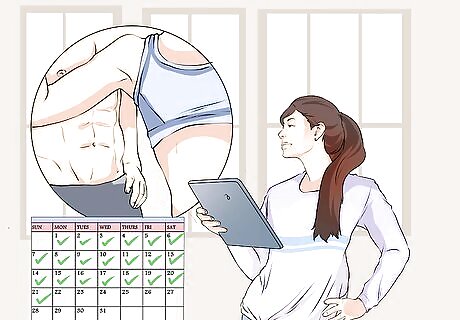
Join a diet program or support group. Giving up sugar isn't easy, and it can help to have support from other people who are going through the same thing. Instead of trying to do it all alone, sign up for a group program or support group. Groups are either in person or online. You'll be able to share motivational stories and tips for making the process go more smoothly. Tell your friends and family what you're up to. The fact that you're giving up sugar may have an impact on other people you regularly eat with. Telling others you have set a goal to give up sugar gives you accountability and support. It also lessens the risk that friends and loved ones will offer you sugar-filled items.
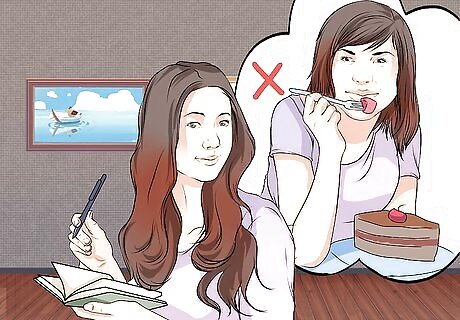
Prepare for slip-ups. Birthday parties, holidays, and other special occasions are celebrated with sugary treats, and it can feel next to impossible not to indulge. If you overindulge, that's OK. Get right back up and start back on your sugar-free diet as soon as you can. Try journaling about what you ate and why you ate it. Many times it might be stress or other emotional factors playing a part into why you slipped up. If you can, limit yourself to just one piece or one cookie so you don't end up throwing yourself off too much. Afterward, get right back on your sugar-free diet. You might experience increased cravings for a few days afterward, so you'll have to be extra careful to keep sugar away.
Changing Your Shopping Habits
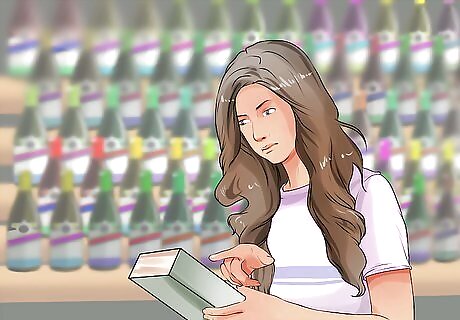
Read food labels every time. Eliminating sugar requires paying very close attention to what you buy at the grocery store since sugar is added to many types of food. The nutrition fact panel tells you how many grams of sugar is in each serving. However, this doesn't tell you if it's natural or added sugar. You expect to find added sugars in sweet foods, but it's also commonly added to savory foods, like salad dressing, bread, and tomato sauce. Read the ingredient list to figure out if there's any added sugar in your foods. Added sugars include white sugar, brown sugar, beet sugar, cane sugar, molasses, agave syrup, high-fructose corn syrup, turbinado, honey, maple syrup, agave syrup, fruit juice concentrate and many more.
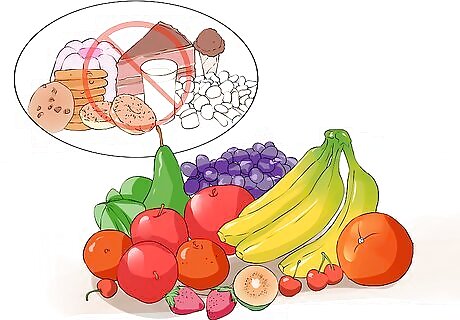
Replace added sugars with naturally occurring sugars. Added sugars that are mixed with food to sweeten them and contain no nutritional value on their own. Naturally-occurring sugars in fruit and milk come with vitamins, minerals, and fiber making them much more nutritious. Naturally-occurring sugars include fructose (found in fruit) and lactose (found in milk). All fruit, fruit products (like unsweetened applesauce), and dairy products (like yogurt, milk or cottage cheese) contain naturally-occurring sugars. You can make a variety of healthier swaps by substituting foods that contain natural sugar for added sugar.

Avoid highly processed foods. Sugar is commonly added to processed and packaged foods to improve the taste, texture, and shelf life. Frozen food, packaged snacks, canned soup, sauces, salad dressings, and marinades often have added sugar. Try making some of these items from scratch if you can. Go for unsweetened and plain varieties whenever possible. For example, consume unsweetened applesauce or plain yogurt. Flavored items generally contain added sugars. Even fruit can be loaded with sugar when it's processed. Fruit juice has been stripped of fiber and water that helps you feel full. Go for whole fruit.
Changing Your Eating Habits
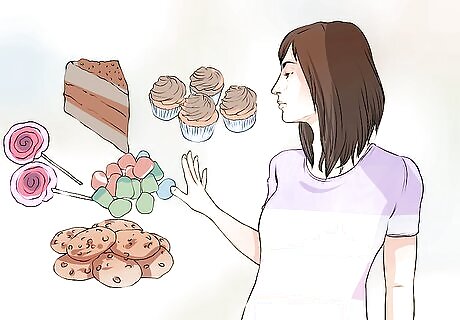
Pass on sweet treats and desserts. One of the most common and obvious sources of added sugars are in foods like candy, cookies, cakes, pastries, and other dessert-type foods. Most know that there is a large quantity of added sugars in these foods when they're made. Giving up on these can help cut out a large portion of added sugar in your diet. As mentioned before, you can choose to cut out these foods cold turkey or taper them slowly out of your diet. You may find it helpful to plan some naturally sweetened, healthy alternatives into your day.
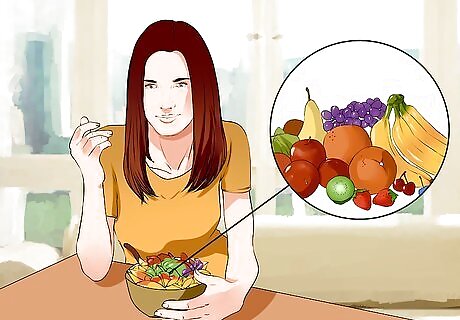
Create delicious sugar-free swaps. Sweet treats provide a lot of enjoyment in our diets. When you're trying to give up sugar, it'll be helpful to find low-sugar or naturally sweetened alternatives when you're in the mood to indulge. Use fruit instead. You can try a small bowl of fruit plain or sprinkled with a little cinnamon after dinner. If you like baked goods, try using sugar-free baking techniques. Consider buying low-sugar treats. Many foods that are made for diabetics or are diet foods may be helpful.
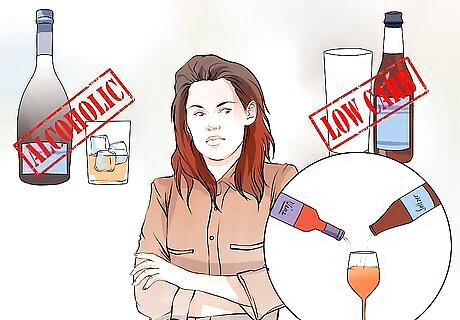
Cut back on alcohol. Alcohol also contains sugar. In addition, it doesn't come with any nutritional benefits. Eliminate alcohol altogether or stick to "light" or low-carb options. All alcoholic beverages have some sugar. It's not just the sweetened mixed drinks like margaritas. If you're in the mood for a beer, choose light or low-carb for the least amount of calories and sugar. If you're in the mood for a glass of wine, make it a "spritzer." This is a mix of wine and seltzer which cuts the sugar and calories in half. If you typically want a mixed drink, ask for unsweetened mixers like seltzer or diet sodas to help cut down on sugar and calories.
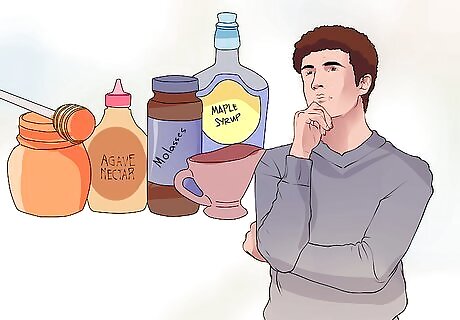
Choose all natural sweeteners. If you are going to include some sugars, it might be wise to choose more naturally occurring, less processed forms of sugar. Try honey, agave syrup, molasses, or maple syrup for a touch of added sweetness. All of these sweeteners are natural and may even contain some vitamins and antioxidants. Make sure you purchase 100% honey or 100% maple syrup so there's not added sugar mixed in.
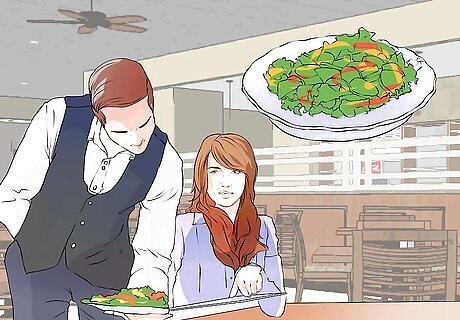
Order wisely in restaurants. It's easy to consume hidden sugar in restaurants, since the meals don't come with nutrition labels for you to examine. You can always ask the server to tell you what's in a dish, but it's often better to have a good strategy for ordering food with the least amount of sugar. Try doing the following to keep your restaurant meals sugar-free: Get your salads dressed with plain oil and vinegar, rather than choosing a pre-made salad dressing. Also, always ask for dressings to be served on the side. Ask for main dishes to be made without sauces and gravies that might have added sugar. Again, ask for these to be served on the side. When in doubt, order steamed vegetables or plain grilled meats instead of casseroles and other mixed dishes that contain a lot of ingredients. For dessert, opt for a plain bowl of fruit or skip it altogether.
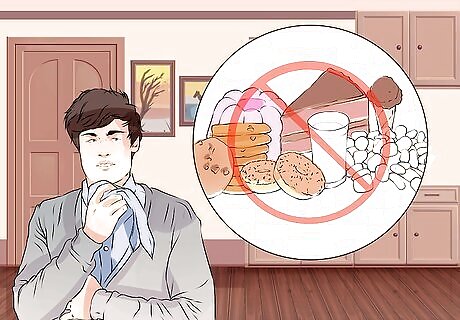
Beware of artificial sweeteners. Since many people are giving up sugars and have become more health conscious, scientists have developed different artificial sweeteners as low-calorie replacements. Aspartame, saccharin, sugar alcohols, and other sweeteners have a variety of different side effects and could potentially be harmful to your health. Studies have shown that when you're trying to give up sugar, the sweet taste of artificial sweeteners may make you crave sugar even more. Avoid processed food that's been sweetened with artificial sweeteners e.g. diet drinks and any typically sweet item that's labeled sugar-free, like candy, ice cream, cake, etc. Artificial sugar might be listed as aspartame, acesulfame potassium, saccharin, neotame, sucralose, maltitol, sorbitol, or xylitol. Avoid these if you'd like.










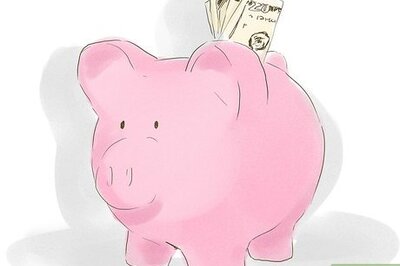




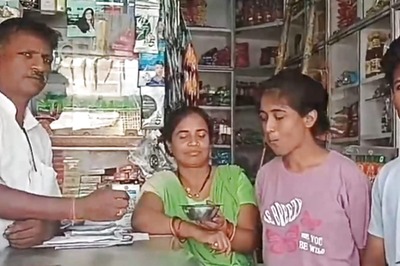
Comments
0 comment